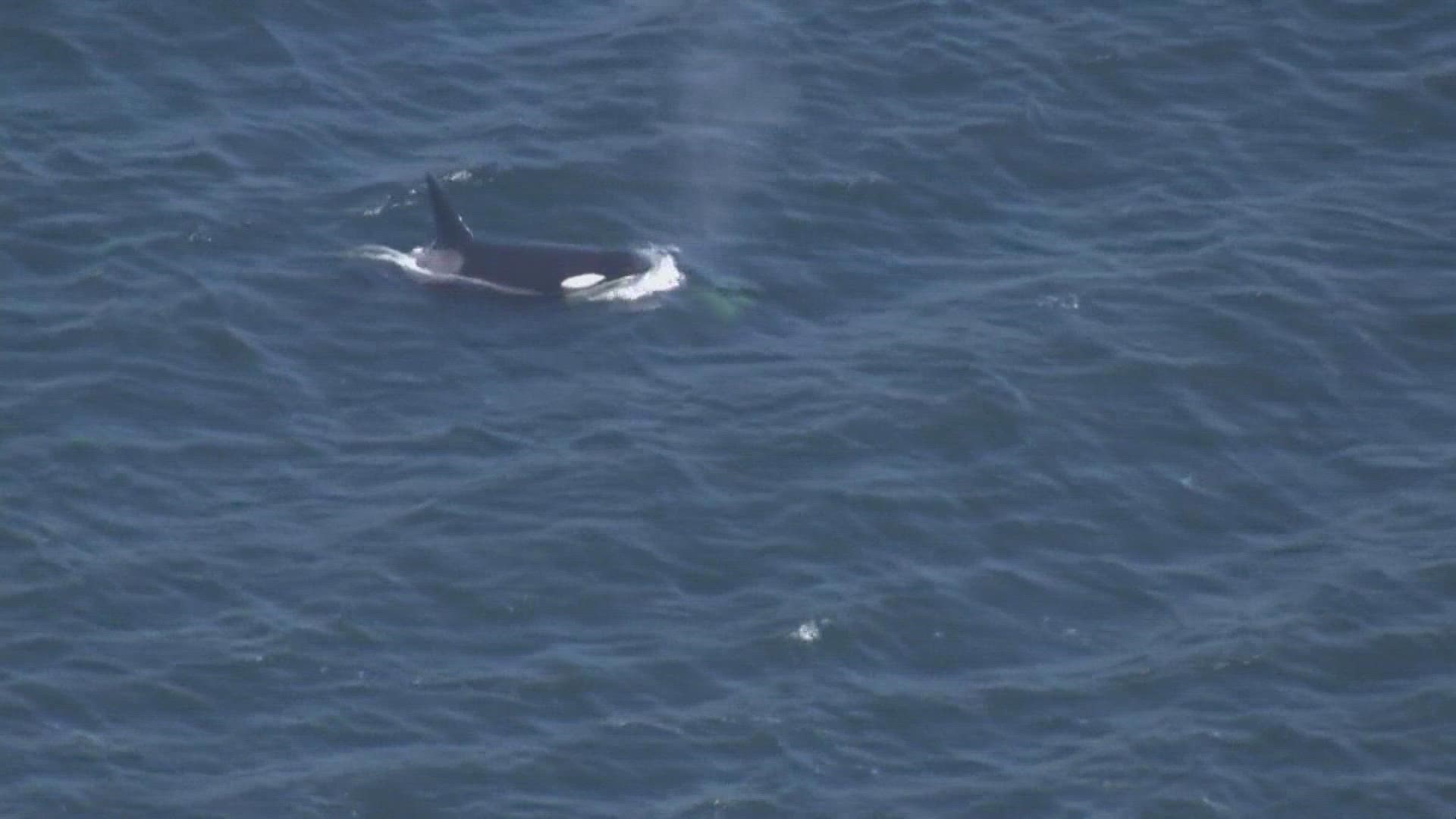SEATTLE — The Pacific Whale Watch Association (PWWA) released a new report showing that 2022 was a record-breaking year for whale sightings.
The experts said seals, sea lions, and porpoises have all recovered in astonishing ways and it's because of this and other protections that the Salish Sea can now support many more whales than it used to.
"2022 was spectacular and it surpassed all of our expectations," said Erin Gless, executive director of the PWWA.
Gless said there were more Bigg's killer whales than ever on record and more humpback whales than ever on record, according to year-end data compiled by the Pacific Whale Watch Association.
Orca Behavior Institute reported more than 1,221 unique sightings of Bigg's killer whales throughout the Salish Sea in 2022.
"That is double what it was just five years ago in 2017," Gless said.
Often referred to as the wolves of the sea, Bigg's -- formerly called transient whales -- was renamed after pioneering killer whale researcher Dr. Michael Bigg. They are known to eat mammals, like seals and porpoises.
"The recovery of Bigg's killer whales and humpback whales is super simple: we stopped hunting them or stopped hunting the things that they eat," said Gless.
But we also seeing a "humpback comeback," as PWWA refers to it.
"Twenty years ago, it was considered an extremely rare event to see a humpback whale, and now we see them almost every day," Gless said.
The gentle giants have been multiplying and only within the span of about 25 years.
"Last year, according to researchers, there were about 400," Gless said.
That is more sightings than ever on record, Gless said.
The big difference-maker? The Marine Mammal Protection Act, Gless said, which went into place in 1972.
"Because of that, we're seeing them really start to repopulate this area," Gless said. "It's amazing how animals will recover if you stop hunting them."
And while the Bigg's killer whales are thriving, Southern Resident killer whales -- which feed off salmon -- are still endangered. There are only 73 of them left, according to a recent count. Still, even for them, 2022 brought reason for hope.
The institute reported that they were spotted in the Salish Sea about 60 days more in 2022 than in the year prior.

